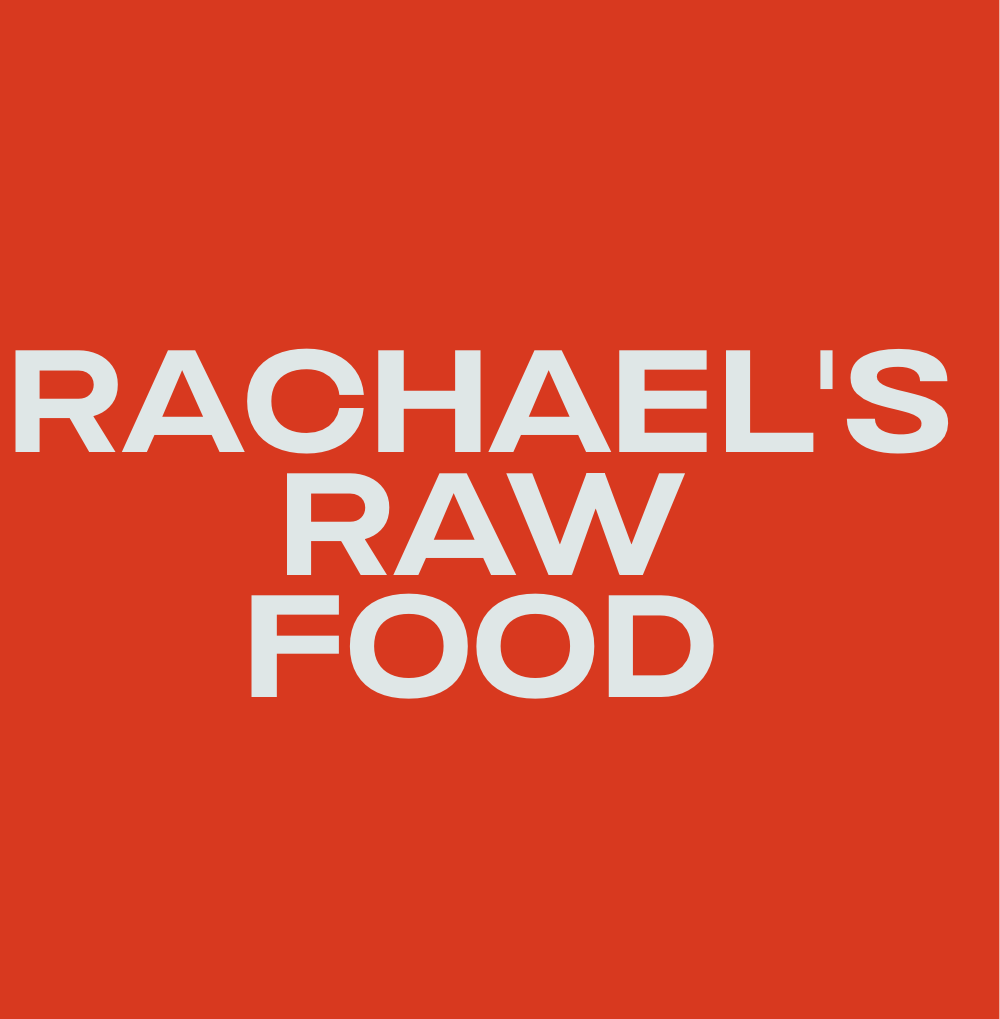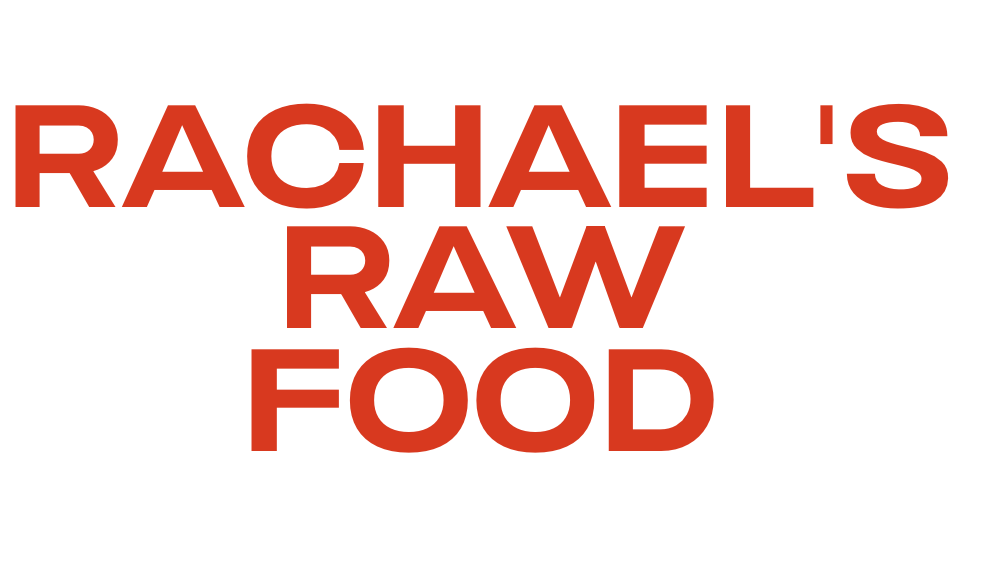Raw Food Recipes
How Much Raw Food to Feed a Kitten: A Complete Guide
Observe the essential guidelines for feeding your kitten raw food, and discover how to ensure they thrive as they grow!

Feeding your kitten the right amount of raw food is essential for their growth and health. For a kitten aged 2-4 months, aim for 10-13% of their body weight daily. Once they reach 4-8 months, reduce it to 6-10%, and for 8-14 months, provide 3-6% of their body weight. Offer smaller, frequent meals, ideally 2-3 times a day, to optimize digestion. Keep an eye on their weight and adjust portions as needed. By following these guidelines, your kitten can thrive on a raw diet—stay tuned to uncover more tips for successful feeding!
Key Takeaways
- Kittens aged 2-4 months should be fed 10%-13% of their body weight daily for optimal growth.
- Offer smaller, frequent meals (2-3 times daily) to enhance digestion in kittens.
- Transition to a raw diet gradually and monitor for digestive issues like diarrhea.
- Regularly track weight and adjust food portions based on growth and activity levels.
- Ensure proper hygiene practices when preparing and storing raw food to prevent contamination.
Feeding Guidelines for Kittens
When it comes to your kitten's nutrition, understanding feeding guidelines is vital for their growth and well-being. Kittens have specific nutrient requirements that change as they grow.
For those aged 2-4 months, you should feed them about 10%-13% of their body weight per day to support their rapid growth and energy needs. As they reach 4-8 months, the recommended portions decrease to 6%-10% of their body weight daily, reflecting a stabilizing growth rate.
It's important to reflect on the quality of food you provide, as using raw cat food can be beneficial for effective relief and overall health. Once your kitten is 8-14 months old, you'll want to provide 3%-6% of their body weight each day, marking their shift into young adulthood.
It's essential to offer smaller, more frequent daily meals—ideally at least 2-3 times a day. This helps optimize digestion and guarantees they absorb the nutrients effectively.
Using raw cat food can be a great way to meet these feeding guidelines, as long as you balance their meals to maintain healthy growth. By paying attention to these guidelines, you can help your kitten thrive and develop into a healthy adult cat.
Nutritional Benefits of Raw Food

Raw food diets for kittens offer numerous nutritional benefits that are fundamental for their growth and development. These diets provide essential amino acids, vitamins, and dietary macronutrients, all important for fostering healthy growth.
The enhanced digestibility of raw formulas means your kitten can absorb nutrients more effectively, promoting overall health and keeping energy levels high, which is especially significant for active little ones. Additionally, a proper diet can help prevent common health issues, making it important to take into account ultimate hamster care practices when choosing food options.
You'll also find a variety of highly palatable raw food options that stimulate your kitten's appetite, making it easier for them to enjoy their meals. Nutritional guidelines suggest that kittens need to consume 10%-13% of their body weight in food daily, ensuring they receive the right nutrients during their rapid growth stages.
Moreover, a balanced raw diet can help address common digestive issues seen in kittens. By focusing on high-quality ingredients, you enhance their ability to absorb nutrients, leading to better overall well-being.
When you prioritize these nutritional benefits in your kitten's diet, you set the stage for a healthy, vibrant life as they grow and develop.
Transitioning to a Raw Diet

Shifting your kitten to a raw diet can be a rewarding process, but it requires careful planning and observation. Start by determining how much raw food to feed your kitten, aiming for about 10-13% of their body weight if they're 2-4 months old. Incorporating healthy dog snacks can also be beneficial for overall health.
You can choose between a gradual introduction by mixing raw food with their current diet or making an abrupt switch, depending on how adaptable your kitten is.
During this change, it's best to offer smaller, more frequent meals—at least 2-3 times daily. This approach supports their digestive health and energy needs as they adjust. Be sure to monitor for any digestive issues such as diarrhea or vomiting. If you notice significant problems, be prepared to adjust the diet or consult your veterinarian.
Hydration is also essential during this time. Always provide fresh water to help your kitten adapt to their new raw diet.
With careful observation and adjustments, your kitten can thrive on a raw food diet, paving the way for a healthier future. Remember, each kitten is unique, so listen to their needs throughout this change.
Monitoring and Adjusting Portions
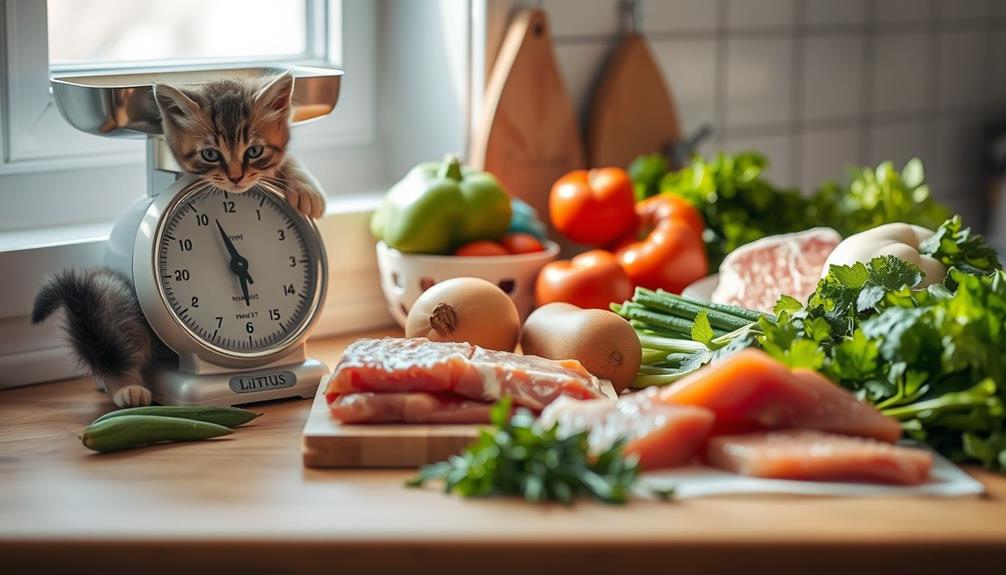
To keep your kitten healthy, you'll need to regularly track their weight and adjust their food portions accordingly.
It's important to take into account factors such as the right balance of nutrition for your pet's growth stage and guarantee that their diet is suitable for their specific needs, similar to how financial planning for elderly care requires careful consideration.
Pay attention to their activity levels and appetite, as these can signal when it's time to make changes.
Weight Tracking Techniques
When it comes to guaranteeing your kitten's healthy growth, regular weight checks are essential. Aim to conduct these checks every 1-2 weeks to monitor their progress accurately. Use a digital scale at home or visit a local vet for precise measurements.
Keep track of any weight changes in a feeding log, as this can help you identify trends over time. Additionally, understanding the signs of newborn constipation can provide insights into your kitten's overall digestive health.
Furthermore, assess your kitten's body condition score (BCS) to evaluate their overall health. This involves looking at their body shape and fat coverage to determine if your kitten is underweight, at an ideal weight, or overweight.
Adjust food portions based on the weight changes you observe. If your kitten loses weight, increase their food intake, while a gain might necessitate a reduction in portions. The goal is to promote consistent growth without rapid fluctuations.
Adjusting for Activity Levels
Understanding your kitten's activity level is essential for determining the right amount of food to support their growth and energy needs. Kittens aged 2-4 months typically require 10%-13% of their body weight daily, while those 4-8 months need 6%-10%. If your kitten is particularly active, aim for the higher end of these ranges to meet their caloric needs.
Additionally, guaranteeing your kitten's health through regular check-ups can help identify any nutritional deficiencies, similar to how essential oils for respiratory health can support overall well-being.
Regularly monitor your kitten's body weight and adjust their food intake as necessary. If you notice weight loss after changing their diet, it's a sign to increase their portions. Active kittens might need up to 4% of their body weight in food, while less active or overweight ones should start around 2%.
Utilizing a body condition score chart can help you assess your kitten's health. This tool allows you to evaluate their body composition and adjust your feeding practices accordingly.
Identifying Dietary Changes
Regularly monitoring your kitten's weight and overall health is vital for identifying dietary changes. Incorporating a balanced diet is essential for their growth and development, as it impacts their overall well-being.
Start with regular weight checks to determine if adjustments to their raw food portions are necessary. If your kitten loses weight after changing diets, it might be a sign to increase their food intake. Utilize body condition score charts to assess your kitten's body fat and overall health, allowing you to fine-tune the feeding amounts based on their individual needs.
Additionally, guaranteeing adequate hydration is key to supporting their health and kidney function, as proper hydration can greatly influence their energy levels and appetite hydration as a key factor.
Pay close attention to your kitten's appetite and energy levels. A reduced appetite or increased lethargy may indicate that dietary changes or even medical attention are required. Conversely, if your kitten is gaining weight unexpectedly, consider decreasing food portions or adjusting the feeding schedule.
Always adapt feeding amounts in line with your kitten's age, activity level, and general health status. Younger kittens typically need around 10%-13% of their body weight in raw food for ideal growth, with this percentage gradually decreasing as they mature.
Safety and Hygiene Practices

Guaranteeing safety and hygiene while handling raw food for your kitten is fundamental to prevent cross-contamination and protect both your pet and your household. Always use separate cutting boards and utensils when preparing raw food. This minimizes the risk of spreading harmful bacteria.
Before and after handling raw food, wash your hands thoroughly with soap and water. This simple step is imperative in maintaining hygiene. Additionally, you might want to take into account using an air purifier maintenance guide to ascertain that your environment remains clean and free from allergens, which is beneficial for your kitten's health.
When storing raw cat food, use appropriate containers in the refrigerator or freezer. This helps maintain freshness and reduces bacterial growth. Regularly clean your food preparation surfaces and utensils with hot, soapy water or a bleach solution to guarantee proper hygiene.
Contemplate wearing gloves while preparing raw food. This additional layer of protection further reduces the risk of contamination and helps maintain cleanliness throughout the process.
Community Feedback and Support

A vibrant community of cat owners can be an invaluable resource when it comes to steering through the world of raw feeding for your kitten. Engaging with fellow cat enthusiasts allows you to share experiences, tips, and strategies for effective raw feeding.
Many owners have reported significant health benefits for their cats after shifting to a raw diet, and their stories can inspire and guide you. Additionally, understanding the importance of budgeting for pet care can guarantee you allocate the right resources for your kitten's diet and health needs.
Community feedback often highlights common challenges, such as overfeeding and weight management. By discussing these issues, you can learn from others and adopt personalized approaches that suit your kitten's specific needs. Each cat is unique, and what works for one may not work for another. This is where the collective knowledge of the community shines, helping you navigate any hurdles you encounter.
Moreover, ongoing interactions in forums provide opportunities for continuous learning, keeping you updated on best practices in raw feeding. As you engage with other cat owners, you'll find support and encouragement, making the shift smoother for both you and your kitten.
Embrace the community, and you'll not only enhance your knowledge but also foster a healthier, happier life for your furry friend.
Understanding the PMR Diet
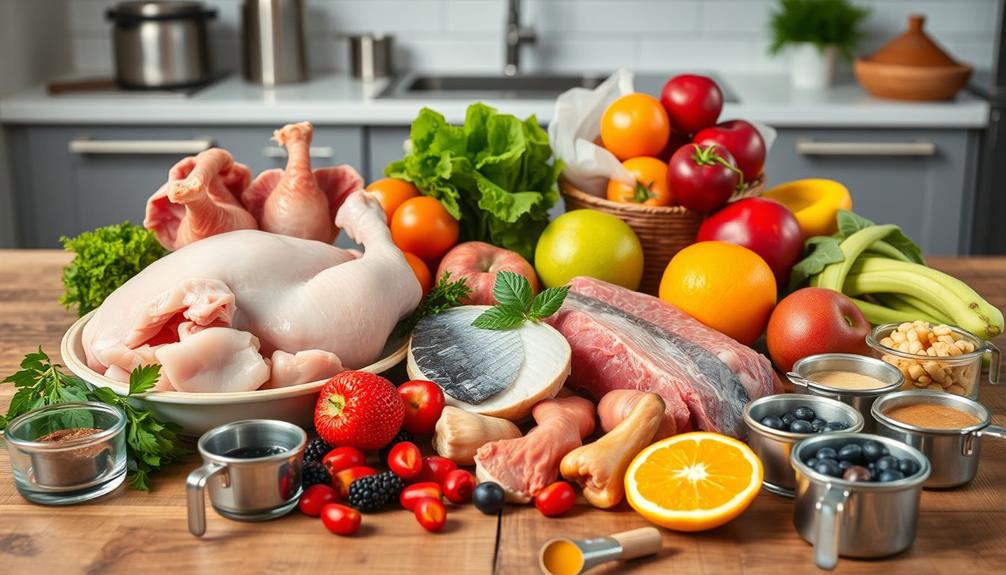
The PMR diet is designed to meet your kitten's specific nutritional needs through a carefully balanced composition.
It's vital to understand the percentages of muscle meat, bones, and organs to guarantee your kitten gets all the essential nutrients for healthy growth.
Additionally, incorporating a variety of protein sources can further enhance their diet and support overall well-being, similar to the way juice diets can provide essential nutrients in a different context.
PMR Diet Composition
Kittens thrive on a well-balanced PMR (Prey Model Raw) diet, which is fundamental for their growth and development. Understanding the PMR diet composition helps you provide the right nutrients for your furry friend.
The ideal makeup consists of 64-69% muscle meat, which is essential for delivering important protein and amino acids. This forms the largest portion of their diet, guaranteeing they've the energy to play and grow.
Next, include 17% raw edible bone, critical for providing calcium and phosphorus, key minerals needed for developing bones and teeth.
Additionally, you should incorporate 7% liver, which supplies fat-soluble vitamins like A and important minerals such as copper. Other organs, also at 7%, contribute considerably to the overall nutritional profile, enhancing the diet's benefits.
While traditional PMR guidelines often overlook it, adding 0-5% animal-based fiber can be beneficial. This small amount promotes colon health and helps prevent nutritional deficiencies in your kitten.
Nutritional Balance Importance
Nutritional balance is fundamental for a kitten's health and development, especially when following a PMR diet. This diet focuses on providing high-quality raw food that mimics the natural prey of a cat. To achieve nutritional completeness, your kitten's daily intake should consist of 64-69% muscle meat, which supplies essential proteins and amino acids critical for growth and energy.
Incorporating raw edible bones is equally important, making up about 17% of the diet. These bones provide necessary calcium and phosphorus for strong bone development.
Additionally, liver and other organs should account for 7% of the diet, offering essential fat-soluble vitamins and minerals that support overall health.
To guarantee your kitten thrives, don't forget to add 2-5% animal-based fiber, like fur or feathers. This inclusion promotes healthy digestion and helps maintain colon health.
Frequently Asked Questions
How Much Raw Food Should I Feed My Cat Chart?
To determine how much raw food to feed your cat, consider its age, weight, and activity level. You'll want to adjust the portions regularly based on its growth and nutritional needs for ideal health.
How Much to Feed a Kitten Chart?
Picture your kitten as a budding tree, needing just the right amount of sunlight. You should feed your little one 10-13% of their body weight daily, adjusting as they grow to guarantee healthy development.
What Is the Ratio for a Raw Cat Diet?
For a raw cat diet, aim for 64-69% muscle meat, 17% raw edible bone, 7% liver, and 7% other organs. This balance guarantees your cat gets the essential nutrients for peak health and growth.
Can Kittens Be Fed a Raw Diet?
Sure, you could just feed your kitten pizza, but a raw diet's way better! Kittens can thrive on raw food, giving them essential nutrients for growth. Just make certain it's balanced, or you might be in trouble!
Conclusion
In summary, feeding your kitten a raw diet can be a rewarding choice for their health and vigor. Did you know that kittens fed a balanced raw diet often show a 30% increase in energy levels compared to those on commercial kibble? By carefully following the guidelines and monitoring their progress, you can guarantee your furry friend thrives. Embrace the journey of shifting to raw food, and enjoy the benefits it brings to your kitten's well-being!
Rachael, the Editor in Chief of RachaelsRawFood.com, is an inspiring and passionate individual who has dedicated her life to promoting the benefits of a raw food lifestyle. Known for her vibrant and energetic personality, Rachael has built a strong online presence that has transformed her personal journey into a thriving community of raw food enthusiasts.
Raw Food Recipes
How Much Raw Food to Feed a Puppy: Essential Guidelines
Find out the essential guidelines for feeding your puppy raw food to ensure their health—discover the perfect balance for their growth and wellbeing.

To keep your puppy healthy, feed them 5-10% of their body weight in raw food each day, depending on their age. For puppies under six months, stick with about 10%, while older pups need closer to 5%. For example, an 8-week-old pup weighing 5 kg needs about 500g of raw food daily. Aim for four meals a day initially, then reduce to three by 16 weeks, and two meals by 12 months. Regular weight checks will help you adjust their diet accordingly. You might find more helpful tips to guarantee your puppy thrives.
Key Takeaways
- Feed puppies 5-10% of their body weight in raw food daily, with younger puppies needing closer to 10%.
- For an 8-week-old puppy weighing 5 kg, provide approximately 500g of raw food each day.
- Transition to adult food around 12 months, reducing daily intake to 2-4% of the ideal adult weight.
- Monitor growth weekly, adjusting food intake based on weight gain and body condition.
- Introduce healthy snacks and fresh fruits to enhance the puppy's overall nutrition and wellness.
Raw Food Amount for Puppies
When it comes to feeding your puppy, understanding the right amount of raw food is vital for their growth and health. Puppies generally need about 5-10% of their body weight in raw food daily, with younger puppies requiring more, while the amount decreases as they grow.
For instance, an 8-week-old puppy weighing 5kg may need around 500g of raw food each day, whereas a 6-month-old puppy might only need about 300g. It's also important to guarantee that the raw food is nutritionally balanced, similar to the ultimate hamster care guide which emphasizes proper diet and nutrition.
Regularly monitoring your puppy's weight is essential to guarantee they maintain a healthy weight and receive the important nutrients they need. As your puppy matures, you'll gradually shift them to adult food by around 12 months of age, lowering their feeding amount to about 2-4% of their ideal adult weight.
Feeding frequency also plays a role in their growth. Start with four meals a day, then reduce to three meals from 16 weeks until 12 months. After that, you can move to two meals daily.
This structured approach helps guarantee your puppy gets the proper nutrition and supports their overall development.
Puppy Feeding Guidelines

When it comes to feeding your puppy, understanding daily food requirements and age-specific needs is vital.
Puppies require a balanced diet that supports their rapid growth and development, similar to how key domains of development in psychology influence a child's growth.
You'll want to monitor their growth progress regularly to guarantee they're getting the right amount of nutrition.
Daily Food Requirements
Feeding your puppy the right amount of raw food is essential for their healthy development. Puppies typically require 5-10% of their body weight in raw dog food daily, with younger pups needing closer to 10%. As they grow, this percentage decreases to around 5% by six months.
To guarantee you're meeting your puppy's nutritional needs, follow these guidelines: Providing healthy dog snacks alongside raw meals can enhance overall wellness and keep your puppy satisfied.
- Monitor a puppy's weight weekly to adjust food intake accurately.
- Start with a feeding schedule of four meals a day, shifting to three by 16 weeks, and then two meals daily from 12-18 months.
- Use feeding charts that recommend appropriate food amounts based on age and weight to guarantee healthy growth.
- Adjust the daily food intake as your puppy grows, keeping in mind their changing puppy needs.
Age-Specific Feeding Needs
Understanding your puppy's age-specific feeding needs is vital for their growth and overall health. When feeding a puppy, you'll want to provide about 5-10% of their current body weight in raw food daily. For instance, an 8-week-old puppy should receive around 10% of their weight, while this amount decreases to about 5% by six months.
It's also important to take into account the nutritional value of the raw food, guaranteeing it provides a balanced diet rich in necessary vitamins and minerals, as this can affect their long-term health and development. Additionally, financial health is significant for pet owners, as managing your budget can help confirm you can provide the best care for your puppy.
As your puppy matures, it's important to adjust the number of meals. Feed them three to four meals a day, moving to three meals by 16 weeks and then to two meals daily between 12 to 18 months. Regular weight monitoring is essential; weekly checks help you tweak the amount of food to guarantee healthy growth and prevent obesity.
After six weeks, start introducing puppy food gradually, shifting to normal formulas by four months to meet their nutritional needs. Keeping an eye on their growth while providing the right balance of a raw food diet will set your puppy up for success.
Monitoring Growth Progress
Monitoring your puppy's growth progress is vital for guaranteeing they receive the proper nutrition during their formative months. By keeping an eye on their weight and age, you can fine-tune their diet to meet their specific needs.
Puppies typically require 5-10% of their growing body weight in food daily, and younger puppies may need a higher percentage. Additionally, it's important to take into account the common types of cold medications if your puppy experiences any health issues that could affect their appetite.
Here are some key tips to help with monitoring growth progress:
- Regular Weight Checks: Weigh your puppy weekly to track their growth trajectory.
- Adjust Feeding Amounts: If your puppy isn't gaining weight as expected, think about increasing their food intake.
- Feeding Frequency: Start with four meals a day and gradually reduce to two by 12 to 18 months.
- Balanced Diet: Confirm you're providing a diet rich in essential amino acids through raw feeding and appropriate puppy formulas.
These practices will help you provide a balanced diet essential for developing a healthy adult dog.
Importance of Proper Nutrition
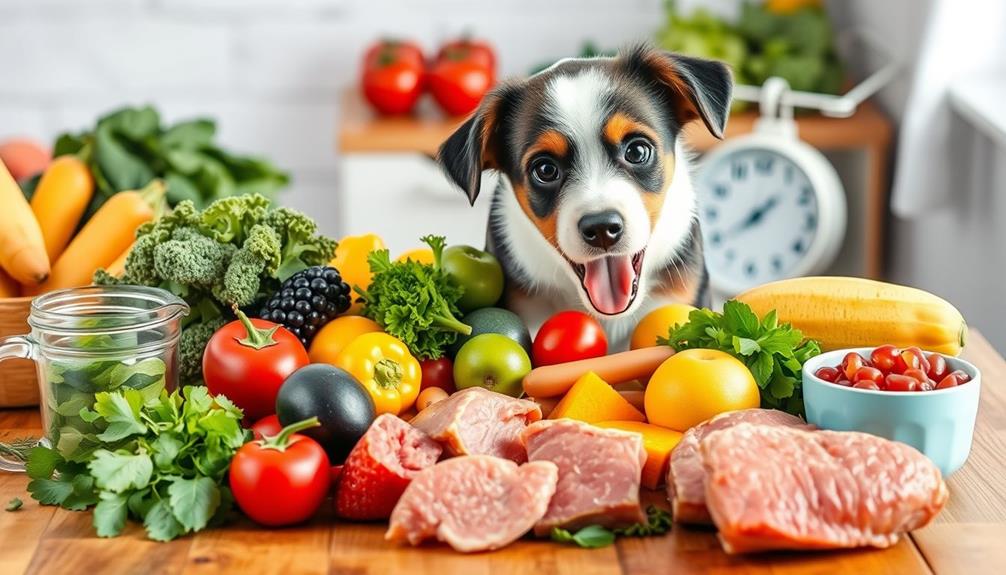
Proper nutrition is essential for your puppy's growth and development, as it lays the foundation for a healthy future. Feeding your puppy a balanced diet that includes high-quality proteins, fats, carbohydrates, vitamins, and minerals is fundamental during this critical growth phase. Aim to provide about 5-10% of their body weight in raw food daily, ensuring they receive the essential nutrients needed for peak health.
Additionally, incorporating fresh fruits and vegetables can enhance their diet, providing important nutrients that support overall well-being.
As your puppy grows, you'll notice that their activity level and body composition can change, making it imperative to continuously assess their dietary needs. Puppies typically benefit from four meals a day, evolving to three meals by 16 weeks, and then two meals daily from 12 to 18 months. This approach keeps their energy levels stable and supports healthy weight maintenance.
Monitoring your puppy's body composition and stool consistency is key to ensuring their nutritional intake is balanced and appropriate. By paying attention to these factors, you can make informed adjustments to their diet, promoting overall health and well-being.
Benefits of a Raw Diet

Embracing a raw diet for your puppy can transform their health and energy in remarkable ways. This nutritious approach provides essential nutrients that support rapid growth and ideal development, especially with high-quality protein from muscle meat.
Additionally, incorporating natural ingredients promotes essential oils for skin health which can further enhance your puppy's well-being.
Here are some key benefits of a raw diet:
- Enhanced Digestion: Puppies fed a raw diet often experience improved digestion and nutrient absorption, which contributes to their overall health and vigor.
- Stronger Immune System: A raw diet can bolster your puppy's immune system, helping them fend off illnesses and reducing the risk of chronic health issues.
- Healthier Skin and Coat: The inclusion of omega fatty acids in natural ingredients results in a glossier coat and healthier skin, making your puppy look their best.
- Better Dental Health: Chewing on raw bones naturally promotes dental health, preventing dental diseases, which is essential during your puppy's growth phase.
Transitioning to Raw Food
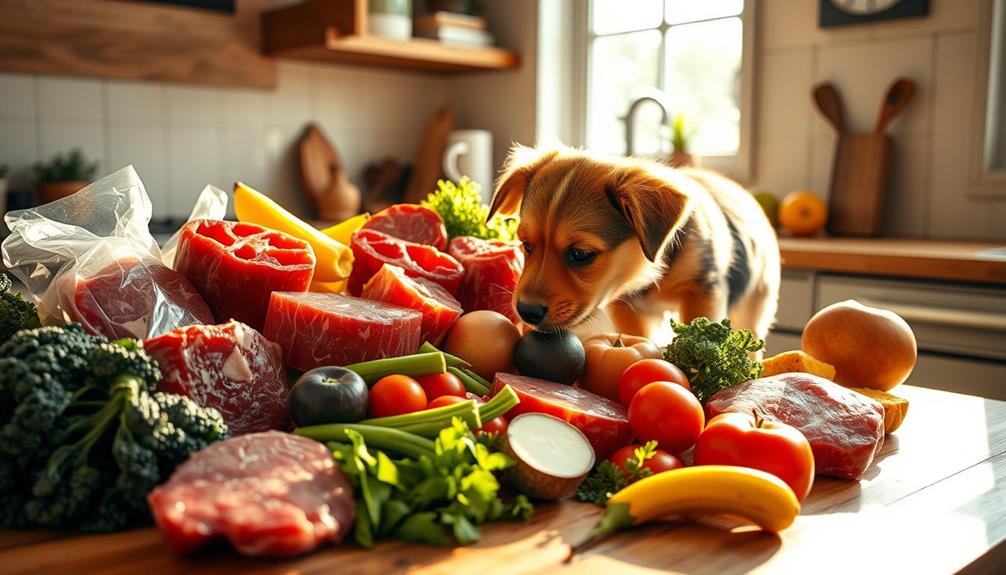
When you decide to shift your puppy to a raw food diet, it's important to do so gradually to avoid any digestive upset. Start the changeover over 7-10 days by introducing small portions of raw food along with their current diet.
Understanding costs associated with assisted living can also be relevant in planning for your puppy's future care. Begin with easily digestible protein sources and monitor for any signs of digestive issues. If your puppy has been on kibble for a while, you can mix raw food with it, but for newly converted puppies, stick to raw food exclusively.
During the changeover, you'll want to feed a puppy three times a day until they're six months old to support their growing nutritional needs. You can use a raw puppy food calculator to determine how much to feed your puppy based on their weight and activity level.
Always consult with a veterinarian for personalized guidance to make sure the raw diet meets your puppy's specific nutritional requirements. This careful approach to changing to raw food will help your puppy adapt smoothly and thrive on their new diet.
Monitoring Growth and Health
As your puppy adapts to their new raw food diet, keeping a close eye on their growth and health becomes essential. Regular monitoring allows you to make necessary dietary adjustments to guarantee your puppy thrives.
Think about incorporating gentle stretches or playtime to promote healthy muscle development and overall well-being, as yoga for back pain can benefit both puppies and humans alike.
Here are key factors to reflect on:
- Puppy Weight: Weigh your puppy weekly to track their growth. Aim for a healthy rate of weight gain.
- Body Condition: Look for a visible waist and rib visibility. If your puppy has excessive fat, think about reducing their feeding amounts.
- Stool Consistency: Pay attention to your puppy's stools. Small, firm stools indicate a balanced diet, while loose stools may signal an issue.
- Activity Levels: Active puppies need more food. Adjust feeding amounts according to their energy needs to maintain a healthy weight.
Don't hesitate to seek veterinarian guidance. They can help you tailor your puppy's diet and monitor growth effectively.
Community Support and Resources

Finding the right support and resources can make a significant difference in your journey with a new puppy. Online communities like The Pack are invaluable for new puppy owners, offering expert advice, shared experiences, and community support related to puppy care and nutrition.
These platforms provide access to feeding charts and puppy food calculators, helping you determine the appropriate amount of raw puppy food based on your pup's weight and age. Additionally, you can explore best websites to earn money online that offer various options for pet owners looking to supplement their income while caring for their pets.
Additionally, subscription services for raw puppy food often include discounts and ongoing community support, easing the burden of feeding practices. Engaging in regular discussions on social media platforms can further enhance your knowledge about puppy health and nutrition.
These conversations foster a supportive environment, allowing you to learn from other pet owners' experiences. Local stockist finders are also essential resources, enabling you to locate stores that carry raw puppy food, ensuring that you have easy access to quality nutrition.
Frequently Asked Questions
How Much Raw Food to Feed a Puppy Chart?
To find a raw food chart for your puppy, check reliable pet nutrition resources. You'll see recommended amounts based on age and weight, ensuring your pup gets the proper nutrition for healthy growth.
What Is the 80 10 10 Rule for Raw Dog Food?
Picture a well-orchestrated meal for your dog. The 80 10 10 rule balances 80% muscle meat, 10% raw bone, and 10% organ meat, ensuring your pup thrives with essential nutrients for a healthy life.
What Are the Guidelines for Raw Feeding Puppies?
When raw feeding puppies, start with 5-10% of their body weight daily, split into 4 meals for younger pups. Gradually introduce the diet over 7-10 days while monitoring their weight for healthy growth.
How to Calculate How Much Raw Food to Feed a Dog?
To calculate how much raw food to feed your dog, weigh them and multiply their weight by 5-10%. Adjust based on age, activity level, and monitor their weight regularly to guarantee proper nutrition.
Conclusion
In summary, feeding your puppy the right amount of raw food isn't just about nutrition; it's about nurturing a vibrant life. By following the guidelines and understanding your pup's needs, you're not just filling a bowl—you're laying the foundation for a healthy future. Remember, every bite shapes their growth and happiness. So, embrace this journey, stay informed, and connect with fellow pet lovers; together, you can guarantee your furry friend thrives in a world of possibilities.
Rachael, the Editor in Chief of RachaelsRawFood.com, is an inspiring and passionate individual who has dedicated her life to promoting the benefits of a raw food lifestyle. Known for her vibrant and energetic personality, Rachael has built a strong online presence that has transformed her personal journey into a thriving community of raw food enthusiasts.
Raw Food Recipes
What Are Raw Foods? A Comprehensive Overview
Savor the vibrant world of raw foods and discover their benefits and risks—what you learn may surprise you!
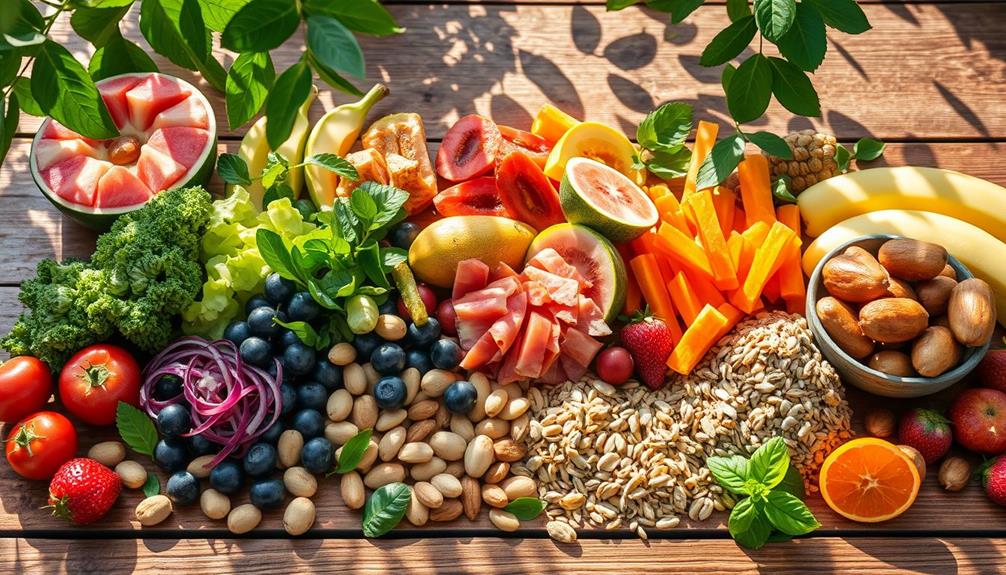
Raw foods are uncooked items that you consume without heating above 48°C (115°F). This includes fresh fruits, vegetables, nuts, seeds, and some raw dairy products. The appeal lies in preserving their natural nutrients and enzymes. Following a raw diet can boost your digestion and overall health, but it isn't without challenges. You might face nutritional gaps and a higher risk of foodborne illnesses if you're not careful. It's crucial to be mindful about your meal planning and preparation. Explore the benefits and risks further to make informed choices about this vibrant lifestyle.
Key Takeaways
- Raw foods are uncooked items not heated above 48°C (115°F), including fruits, vegetables, nuts, seeds, and some dairy products.
- The raw food diet aims to preserve natural enzymes and nutrients for enhanced health benefits and overall wellness.
- Potential health benefits include improved digestion, better skin health, weight loss, and reduced chronic disease risks.
- Risks of raw food consumption include foodborne illnesses and nutritional deficiencies, particularly in protein, vitamin B12, and iron.
- Proper food preparation techniques, such as soaking and sprouting, are essential for maximizing nutrient absorption and ensuring food safety.
Definition of Raw Foods
Raw foods are defined as uncooked items that haven't been heated above 48°C (115°F), which helps preserve their natural enzymes and nutrients. This culinary approach primarily includes fresh fruits and vegetables, nuts, seeds, and some dairy products, while excluding refined or chemically processed items. By consuming these uncooked foods, you aim to maintain the nutritional integrity of the ingredients, allowing you to enjoy their full health benefits.
Advocates of the raw food diet believe that the preservation of natural enzymes in foods can enhance digestion and overall wellness. Additionally, incorporating antioxidant-rich items such as cranberry juice can complement a raw food diet, contributing to overall health.
However, it's important to be aware of the risks associated with raw food consumption, particularly the potential for foodborne illnesses like salmonella and E. coli. These risks are especially prevalent with raw produce and unpasteurized dairy products, which can pose health threats if not handled properly.
Balancing the desire for nutritious raw foods with safety precautions is significant. By understanding the benefits and risks, you can make informed choices that support your health while minimizing the chances of foodborne illness.
Embracing this diet can lead to improved well-being, provided you take care to select and prepare your foods wisely.
Growth of the Raw Food Movement

Interest in the raw food movement has surged in recent years, fueled by a growing awareness of health and wellness. Many people are now enthusiastic to adopt raw food diets, which emphasize unprocessed foods and fresh ingredients. This trend aligns with the rising popularity of natural remedies, as many individuals seek to incorporate healthier options into their lifestyles; for instance, natural remedies alongside conventional medications have gained traction in the health community.
Social media platforms have played a significant role in this shift, with influencers sharing enticing recipes and inspiring success stories that draw in a larger audience. As raw food products become more available in supermarkets and specialty stores, it's easier than ever for you to incorporate these foods into your daily meals.
However, while there are potential health benefits associated with raw diets, it's crucial to reflect on the risks involved. Ongoing debates highlight concerns regarding food safety and nutrient intake. A strict raw food lifestyle could lead to nutrient deficiencies, particularly if you're not careful in balancing your meals.
Moreover, the risk of foodborne illnesses increases when consuming raw foods, making food safety a critical aspect to address. Before diving into the raw food movement, weigh both the advantages and potential drawbacks to guarantee you make informed choices for your health and well-being.
Benefits of Cooking
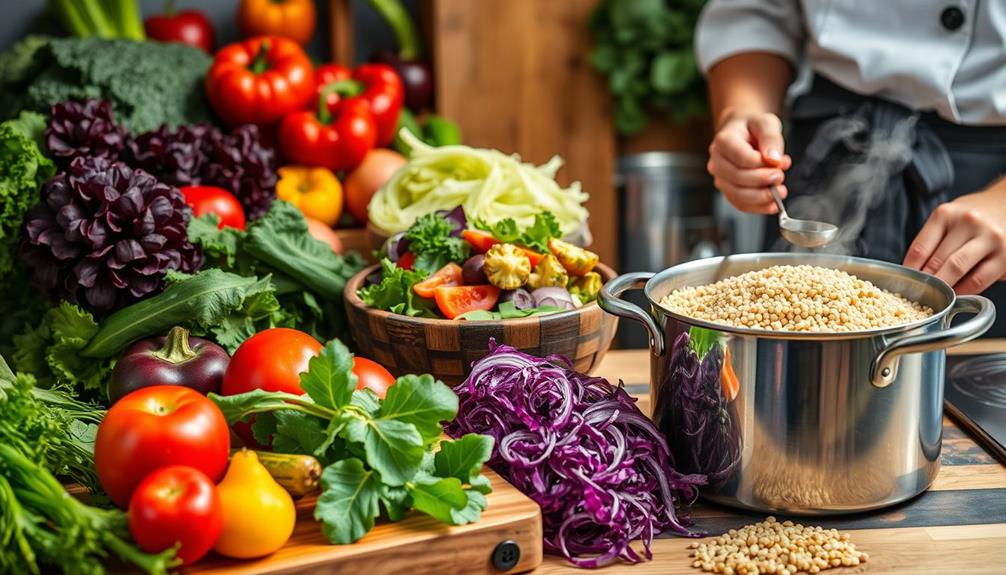
When you cook food, you enhance nutrient absorption, making essential vitamins and minerals more accessible to your body.
Cooking also greatly reduces harmful pathogens, providing a safer eating experience. Certain cooking methods can even increase the availability of beneficial compounds, such as those found in essential oils for health.
Historically, our ancestors thrived on cooked foods, which improved digestibility and contributed to their survival.
Enhanced Nutrient Absorption
Cooking food plays an essential role in enhancing nutrient absorption, making it more beneficial for your health. When you cook certain raw foods, like tomatoes and carrots, you boost the bioavailability of important nutrients such as lycopene and beta-carotene. This means your body can absorb these nutrients more easily, supporting your overall health.
Additionally, understanding breast cancer symptoms can help you maintain better health through informed dietary choices. Historical evidence suggests that early humans gained survival advantages by cooking, as it allowed access to more calories and nutrients from their diets.
Different cooking methods, like steaming and boiling, can break down tough cell walls in vegetables, facilitating greater nutrient release during digestion. Although some vitamins, such as vitamin C and certain B vitamins, may diminish during cooking, the overall health benefits from enhanced nutrient absorption typically outweigh these losses.
Reduced Foodborne Pathogens
One of the most crucial benefits of cooking is its ability to reduce foodborne pathogens. When you cook food at temperatures above 165°F, you effectively kill harmful bacteria and pathogens, markedly lowering the risk of foodborne illnesses like Salmonella and E. coli. This is especially important when dealing with raw foods such as meats and eggs, which are more likely to harbor these dangerous pathogens.
Additionally, cooking can help enhance the overall quality of the food, similar to how regular cleaning and replacing filters in air purifiers can improve air quality.
Cooking isn't just about safety; it also enhances nutrient absorption. By breaking down complex carbohydrates and proteins, cooking makes it easier for your body to digest and absorb essential nutrients. While you might lose some vitamins during the cooking process, the overall health benefits from reducing bacteria far outweigh these losses.
Incorporating cooking into your food preparation routine is a crucial step for food safety. By ensuring your meals are cooked properly, you're not only protecting yourself from potential illnesses but also optimizing the nutritional value of your food.
Historical Survival Advantages
Throughout history, our ancestors discovered that cooking food not only made it tastier but also offered significant survival advantages. By cooking, they increased their caloric intake, supporting the higher energy needs essential for survival. This shift allowed them to enjoy a wider variety of nutrients that raw foods alone couldn't provide, highlighting the importance of diversification strategy in their diets.
Cooking also played a vital role in reducing the risk of foodborne pathogens, which enhanced overall health and lowered mortality rates from foodborne illnesses. As they cooked their meals, they experienced better health outcomes, which contributed to population growth and societal advancement.
Moreover, cooking enhances nutrient bioavailability, enabling the body to absorb more vitamins and minerals effectively. This means that the same ingredients, when cooked, can provide greater nutritional benefits than when consumed raw.
In essence, the practice of cooking not only transformed diets but also shaped human evolution, fostering a healthier, more resilient population. By embracing cooking, our ancestors not only secured their survival but also laid the foundation for the diverse and nutritious diets we enjoy today.
Risks of Raw Food Consumption
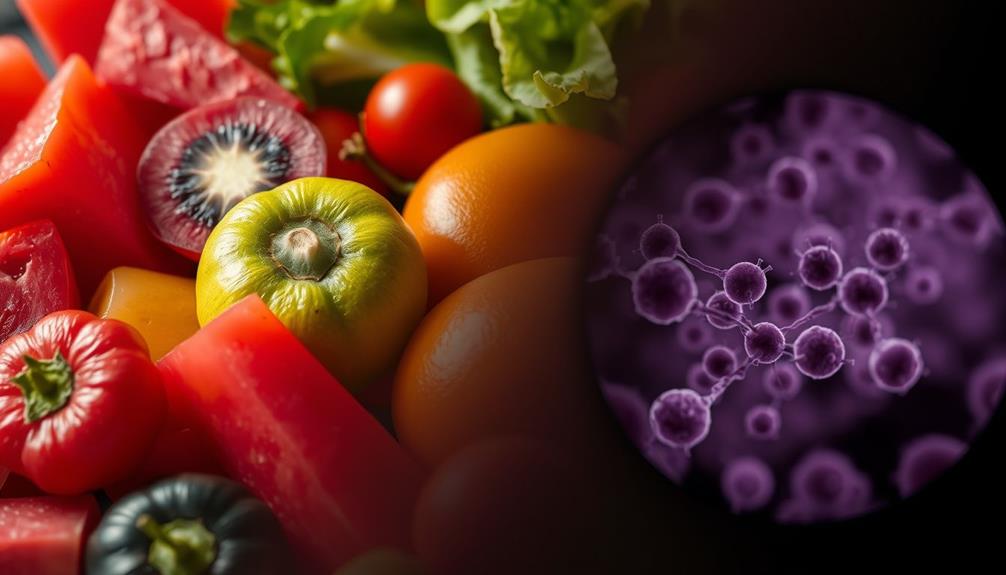
Raw food diets can pose significant health risks that you should be aware of. One major concern is the heightened risk of foodborne illnesses associated with raw foods. Outbreaks linked to raw produce, unpasteurized dairy, and undercooked meats often stem from harmful pathogens like Salmonella and E. coli.
Consuming unpasteurized dairy can lead to severe infections and gastrointestinal issues, so it's important to assess this risk. Additionally, proper diet guidelines suggest that a balanced approach to food can help mitigate these risks. If you're not careful with proper food preparation, you might expose yourself to pesticide residues on raw fruits and vegetables, which can pose health concerns.
Moreover, a limited variety in raw diets can result in nutritional deficiencies, particularly in vital nutrients like protein, vitamin B12, and iron, unless your diet is meticulously planned.
Certain raw foods, like kidney beans and cassava, can be toxic if eaten uncooked, underscoring the significance of proper food preparation techniques.
Types of Foods in Raw Diets
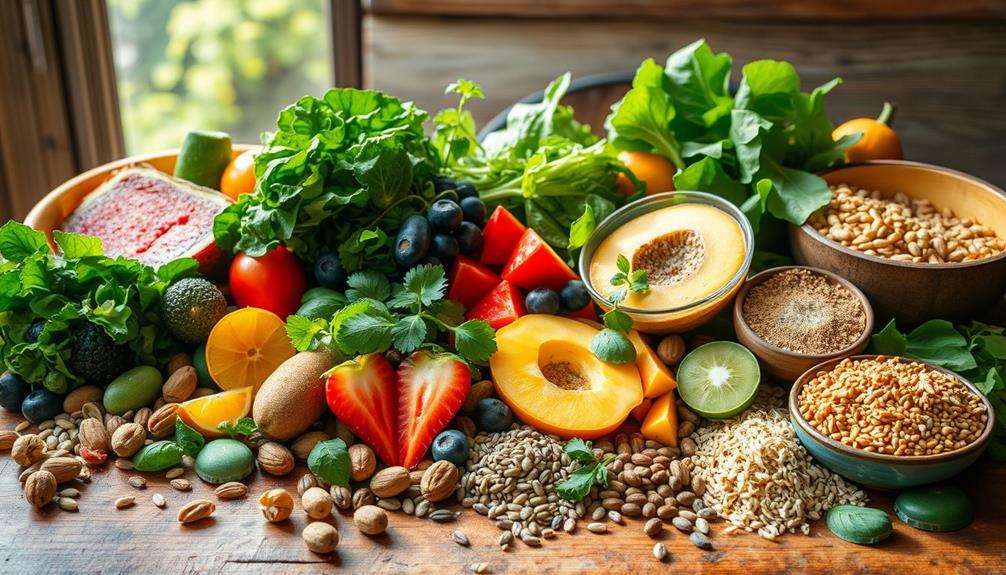
Exploring the variety of foods in raw diets reveals a colorful array of unprocessed fruits and vegetables that are packed with essential vitamins, minerals, and fiber. These raw foods form the foundation of any raw diet, providing a range of flavors and textures to enjoy.
Coffee enthusiasts are encouraged to explore and identify favorites, as this can enhance the overall dietary experience. You'll find staples like nuts and seeds, which offer healthy fats, protein, and crucial nutrients without any cooking involved.
Some raw diets also include dairy products, such as raw cheeses and yogurt, but it's important these are unpasteurized to comply with raw food guidelines. Fermented foods, like kimchee and sauerkraut, play a role too, contributing probiotic benefits and enhancing digestibility. Additionally, incorporating numerous varieties available can add depth and excitement to meals.
While raw fish and meats can be part of some raw diets, they require careful handling due to potential foodborne pathogens, making them a more controversial choice. If you decide to include these, always prioritize safety and sourcing.
In essence, a raw diet encompasses a wide variety of unprocessed foods that can nourish your body while offering exciting culinary experiences. By incorporating fruits, vegetables, nuts, seeds, dairy, fermented foods, and sometimes raw fish or meats, you create a vibrant and nutritious meal plan.
Health Benefits and Nutritional Considerations
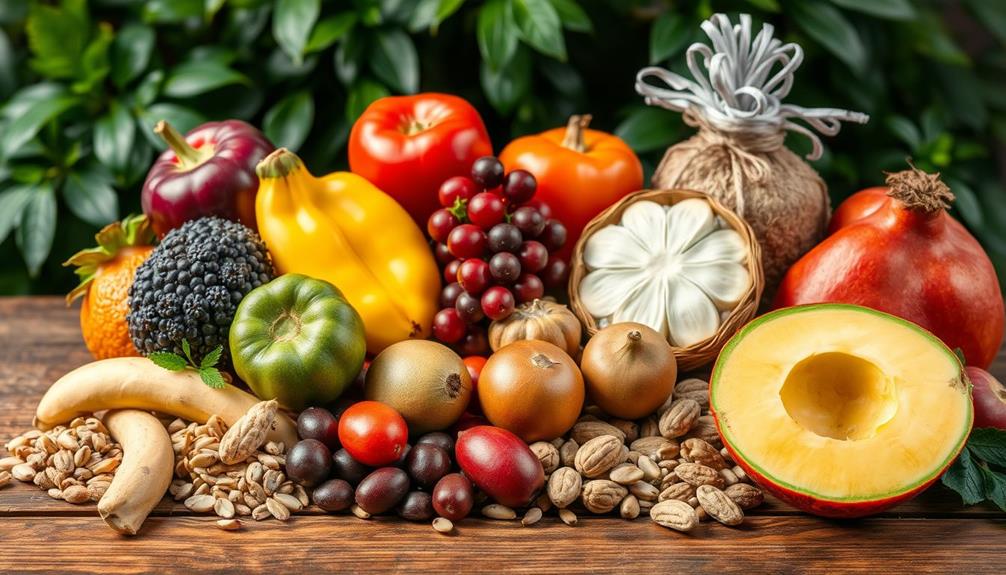
Embracing the raw food diet can lead to a wealth of health benefits, primarily due to its high content of fresh fruits and vegetables. These foods are packed with essential nutrients, vitamins, and minerals that can improve digestion and overall health. You may notice benefits like weight loss, enhanced skin health, and a reduced risk of chronic diseases such as heart disease and diabetes.
However, it's vital to address your nutritional needs while following this diet. A strictly raw food regimen can lead to protein deficiencies and other nutrient gaps if not well-planned. To guarantee you're getting a balanced intake, consider incorporating a variety of foods and possibly supplements for certain vitamins, like B12.
Here's a quick overview of the nutritional considerations:
| Nutrients | Benefits | Considerations |
|---|---|---|
| Vitamins & Minerals | Support overall health and immunity | May require supplementation |
| Protein | Essential for muscle repair and growth | Risk of deficiencies |
| Fiber | Aids digestion and promotes satiety | Can lead to digestive discomfort |
Pros and Cons of Raw Food Diet
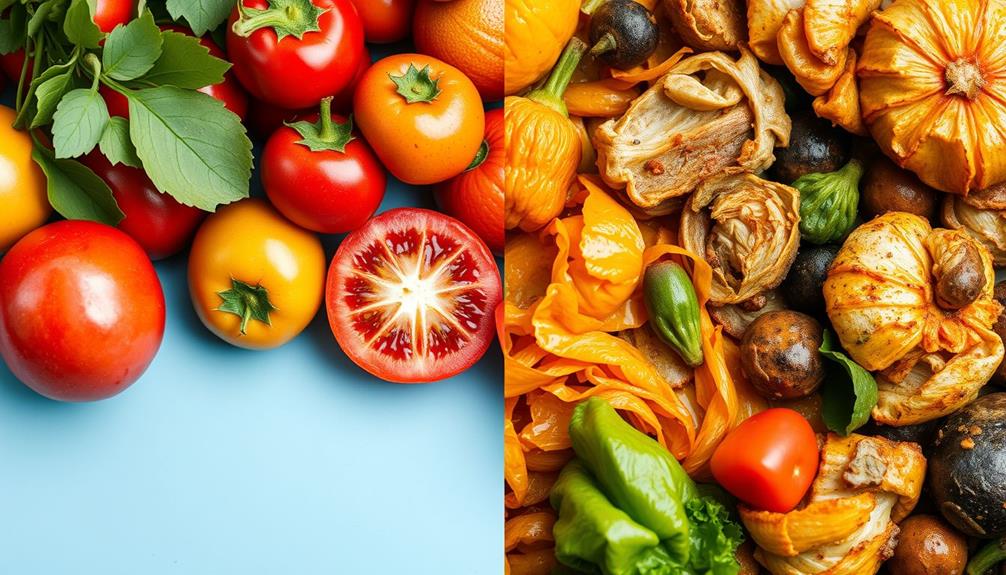
When considering a raw food diet, you'll find notable health benefits like increased nutrient intake from fresh fruits and vegetables, as well as improved digestion due to the high fiber content.
However, it's important to weigh these advantages against potential nutritional risks, such as deficiencies in protein and vitamin B12.
Additionally, incorporating raw foods like herbal teas may complement your diet by providing relaxation and digestive support.
Balancing these factors will help you determine if this diet fits your lifestyle and health goals.
Health Benefits Overview
The raw food diet offers a mix of significant health benefits and potential drawbacks that you should consider. One of the primary advantages is that it's rich in raw fruits and vegetables, providing high levels of nutrients and fiber that can enhance digestion and overall health.
This approach to eating can also tap into the power of imagination by encouraging individuals to explore new food experiences and develop creative meal ideas. You may experience weight loss due to the lower calorie intake associated with unprocessed foods, which can lead to reduced body fat and lower triglyceride levels.
Additionally, the health benefits of the raw food diet include improved skin health, increased energy, and a reduced risk of chronic diseases like heart disease and diabetes.
However, it's important to be aware of the potential risks. The diet can lead to nutrient deficiencies, particularly in protein and vitamin B12, which are challenging to obtain from raw sources alone.
Moreover, the high fiber content may cause digestive issues for some individuals. Finally, the risk of foodborne illnesses is heightened since consuming raw produce, dairy, and meats exposes you to harmful bacteria like Salmonella and E. coli.
Balancing these aspects is vital for anyone considering the raw food diet.
Nutritional Risks Considerations
Considering the health benefits of the raw food diet, it's important to weigh the potential nutritional risks that come with it. While you may enjoy a diet rich in fresh fruits and vegetables, you could face deficiencies in essential nutrients like protein and vitamin B12 due to limited food variety. Cooking can enhance the bioavailability of certain nutrients, such as beta-carotene and lycopene, that your body may not absorb as effectively from raw foods.
In addition, following a raw food diet may lead to reduced caloric intake. This could result in weight loss, but also risks energy deficiency and nutrient imbalances if you don't plan your meals carefully. Moreover, the risk of foodborne illnesses, such as Salmonella and E. coli, rises with the consumption of raw foods, particularly unpasteurized items.
Lastly, long-term adherence may cause digestive issues and health risks, like lower bone mass and elevated homocysteine levels.
| Nutritional Risks | Potential Issues | Considerations |
|---|---|---|
| Nutrient Imbalances | Deficiencies in protein, B12 | Meal planning is essential |
| Foodborne Illnesses | Increased risk with raw foods | Sourcing and handling matter |
| Digestive Issues | Long-term complications | Monitor health regularly |
Challenges of Following Raw Diet

Following a raw food diet can be socially challenging, especially since limited food options often make dining out or attending gatherings difficult. You might find yourself facing some of these hurdles:
- Limited choices at restaurants and social events
- Time-consuming meal preparation and planning
- Potential digestive discomfort as your body adjusts
- Risks of nutrient deficiencies without careful planning
Preparing raw meals isn't just about choosing fresh fruits and vegetables; it often demands advanced kitchen skills and knowledge of food safety.
If you don't plan your meals thoroughly, you could end up wasting food since raw ingredients spoil faster than cooked ones.
Plus, the initial shift to a high-fiber diet may lead to gas and cramping, which can be uncomfortable.
Long-term adherence to a raw food diet may also expose you to deficiencies in essential nutrients like protein, vitamin B12, and iron.
This means you'll need to be especially diligent in your meal planning and may even need to contemplate supplementation to maintain a balanced diet.
Food Preparation Techniques
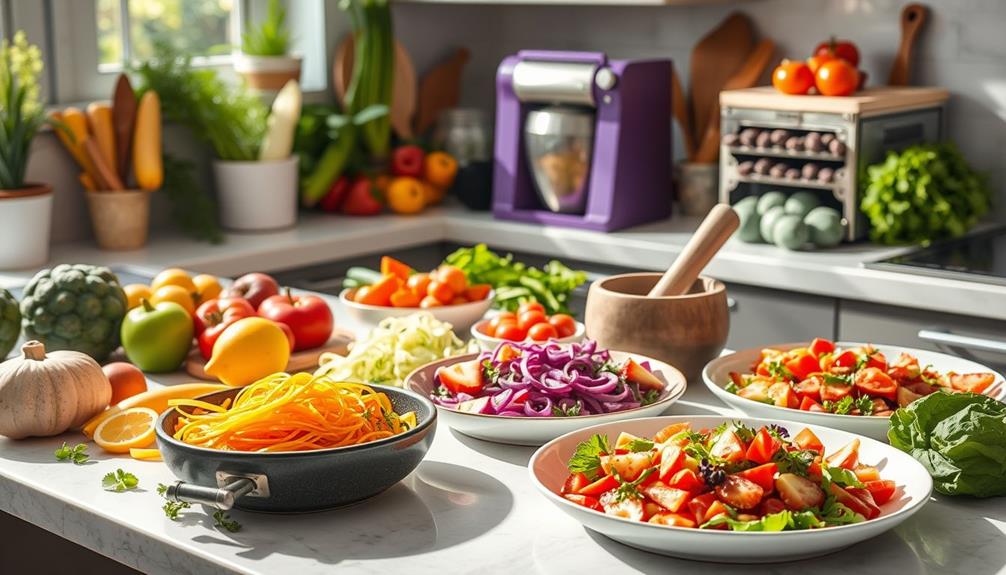
Exploring various food preparation techniques is essential for anyone on a raw food diet, as these methods enhance digestibility and nutrient absorption. Here's a quick overview of some effective techniques:
| Technique | Description |
|---|---|
| Soaking | Soak beans and grains in water to break down anti-nutrients, improving digestibility. |
| Sprouting | Sprout grains and seeds to increase nutrient density and reduce anti-nutritional factors. |
| Dehydrating | Dehydrate fruits and vegetables at low temperatures to preserve nutrients and extend shelf life. |
| Juicing/Blending | Juice or blend fresh produce for easy consumption of a variety of nutrients. |
Frequently Asked Questions
What Is the Overview of Raw Food Diet?
The raw food diet focuses on unprocessed, whole foods, emphasizing fruits, vegetables, nuts, and seeds. You'll enjoy benefits like increased energy and improved digestion, but you'll need to plan carefully to avoid nutritional deficiencies.
What Is Raw Food Explanation?
Imagine biting into a crisp apple, bursting with flavor. Raw food means eating uncooked, unprocessed fruits, vegetables, and nuts. It's all about preserving nutrients and enzymes for potential health benefits while enjoying vibrant, natural tastes.
What Is Considered Raw Food?
When you think about raw food, consider uncooked fruits, vegetables, nuts, and seeds. You're also looking at unprocessed dairy and some animal products, all prepared without heat to preserve nutrients and enzymes.
What Is the Raw Food Theory?
The raw food theory suggests that eating uncooked foods preserves essential nutrients and enzymes. You'll likely experience increased energy, better digestion, and reduced chronic disease risks by choosing raw fruits, vegetables, nuts, and seeds.
Conclusion
In your quest for a cleaner, greener diet, embracing raw foods can be a invigorating route. With vibrant veggies and luscious fruits, you can savor the sensational flavors nature offers. However, stay savvy about potential pitfalls and make sure you're well-informed. As you navigate the raw food domain, remember that balance is key. By blending the best of both worlds—raw and cooked—you can cultivate a colorful, healthful plate that truly nourishes your body and spirit.
With her ability to convey complex concepts in a clear and accessible manner, Belinda ensures that readers of all backgrounds can grasp the benefits and techniques of raw food. She excels at breaking down scientific information into digestible pieces, allowing readers to understand the impact of raw food on their bodies and encouraging them to make informed choices about their diet.
One of Belinda’s notable contributions to rachaelsrawfood.com is her collection of mouthwatering recipes. She delights in experimenting with various combinations of raw ingredients, exploring innovative ways to create delicious and nutritious meals. Belinda’s recipes showcase the incredible flavors and textures of raw food and emphasize its versatility, dispelling any misconception that a raw food diet is limited or monotonous.
In addition to her writing responsibilities, Belinda actively engages with the raw food community, attending workshops, seminars, and conferences to expand her knowledge and network. She enjoys connecting with like-minded individuals, exchanging ideas, and staying up to date with the latest trends and advancements in the field of raw food nutrition.
Raw Food Recipes
How Much Raw Food for My Dog? Find Out Here
Wondering how much raw food your dog really needs? Discover the key factors that influence their diet and ensure their health thrives.

To determine how much raw food to feed your dog, you should consider their weight. Adult dogs typically need 2-3% of their ideal body weight in raw food daily, while puppies need more—around 5-10% of their body weight for growth. For better digestion, it's best to divide their daily portion into two meals. Keep an eye on your dog's weight and energy levels, as adjustments may be necessary. Quality ingredients matter, so choose balanced raw food brands. To optimize their diet even further, there's more you can discover about raw feeding guidelines and nutritional needs.
Key Takeaways
- Adult dogs require 2-3% of their ideal body weight in raw food daily, with smaller dogs needing 5-6%.
- Puppies should receive 5-10% of their body weight, decreasing to 5% by six months.
- Divide daily portions into two meals for adult dogs and 3-4 meals for puppies initially.
- Use raw dog food calculators to determine precise portion sizes based on weight and activity level.
- Regularly monitor your dog's weight and health to adjust food intake as needed.
Understanding Dog Nutrition
Understanding your dog's nutrition is important for their health and well-being. When it comes to feeding your furry friend, it's essential to know the right amount of raw food to provide. For adult dogs, a good rule of thumb is to feed them about 2% to 3% of their body weight in raw food daily. This amount helps maintain a healthy weight and meets their nutritional needs.
Additionally, incorporating a variety of fresh ingredients can enhance their diet and support their overall health, similar to the way a balanced diet is important for small pets like hamsters, as outlined in ultimate hamster care guide.
On the other hand, puppies require much more—typically 5% to 10% of their body weight—since they need extra energy to support their rapid growth.
You can use a raw food calculator to determine the specific feeding amount based on your dog's unique factors, like age, breed, and activity level. Keep in mind that nutritional balance is essential in raw diets; make sure you're including muscle meat, organ meat, and bone, along with important vitamins and minerals.
Regularly monitor your dog's weight and body condition to adjust their food intake as needed. By understanding these nutritional basics, you can provide your dog with the best possible diet tailored to their specific needs.
Calculating Portion Sizes
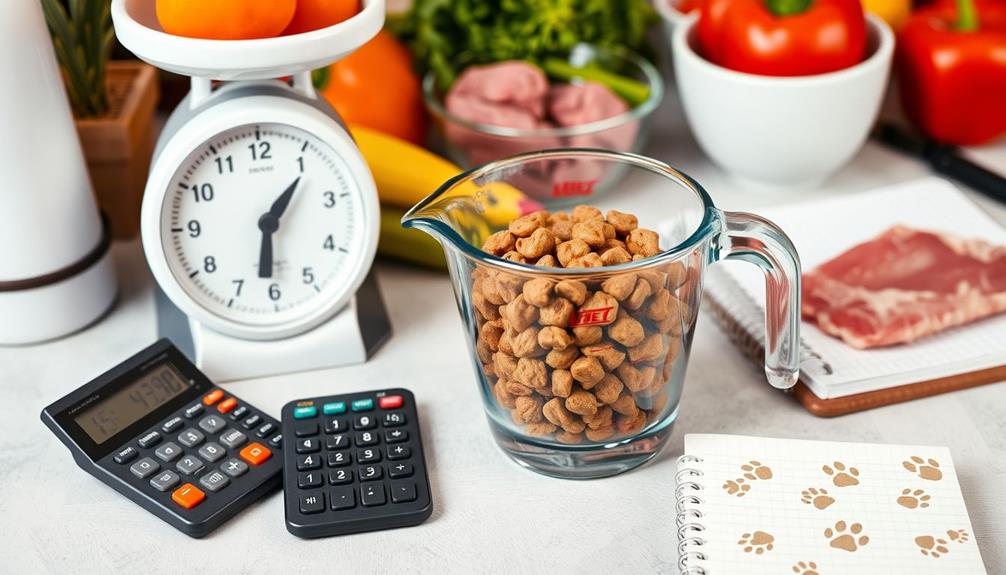
How do you know if you're feeding your dog the right amount of raw food? To calculate portion sizes, you need to take into account your dog's weight, activity level, and ideal weight. Generally, adult dogs require 2% to 3% of their body weight in raw food daily. For puppies, the requirement is higher, ranging from 5% to 10%.
Using a raw dog food calculator can simplify this process, helping you determine the precise amount of raw food for your furry friend. Here's a quick reference table to guide you:
| Dog Weight (lbs) | % of Body Weight | Amount of Raw Food (grams) |
|---|---|---|
| Up to 5 lbs | 5-6% | 113-170 |
| 6-14 lbs | 4-5% | 170-340 |
| 15-19 lbs | 2.5-3% | 170-255 |
| 20+ lbs | 2-3% | 255+ |
Adjust these amounts based on your dog's activity level and metabolic rate. Regularly monitor your dog's weight and health to verify they're thriving on their raw food diet.
Feeding Guidelines for Adults
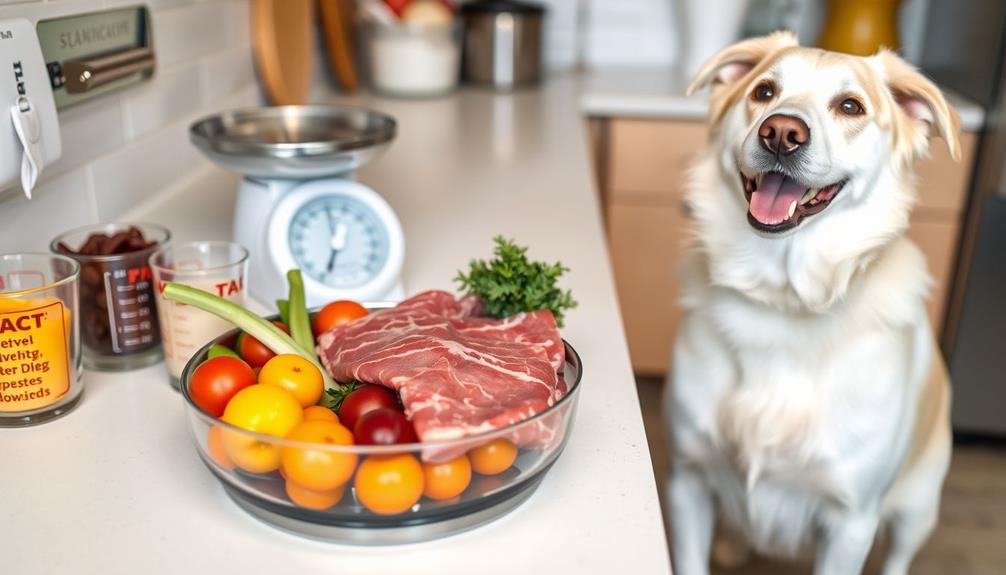
Feeding adult dogs requires careful attention to their nutritional needs to guarantee they maintain a healthy weight. To make sure your adult dog thrives, you should provide 2-3% of their ideal body weight in raw food daily. For instance, if your dog weighs 30kg, aim for approximately 600g to 900g of food each day.
It's also vital to take into account the quality of the raw food you provide, as the right cold medication can greatly impact overall health. Remember, smaller dogs typically need a higher percentage of their body weight; for dogs under 5 lbs, the recommendation can be 5-6%.
It's essential to divide the daily portion into two meals. This approach supports better digestion and helps maintain energy levels throughout the day.
Keep in mind that these feeding guidelines are starting points. Regularly monitoring your dog's weight and body condition is important for adjusting the amount of food as needed. If your dog starts to gain or lose weight, think about modifying their daily portion accordingly.
Nutritional Needs for Puppies
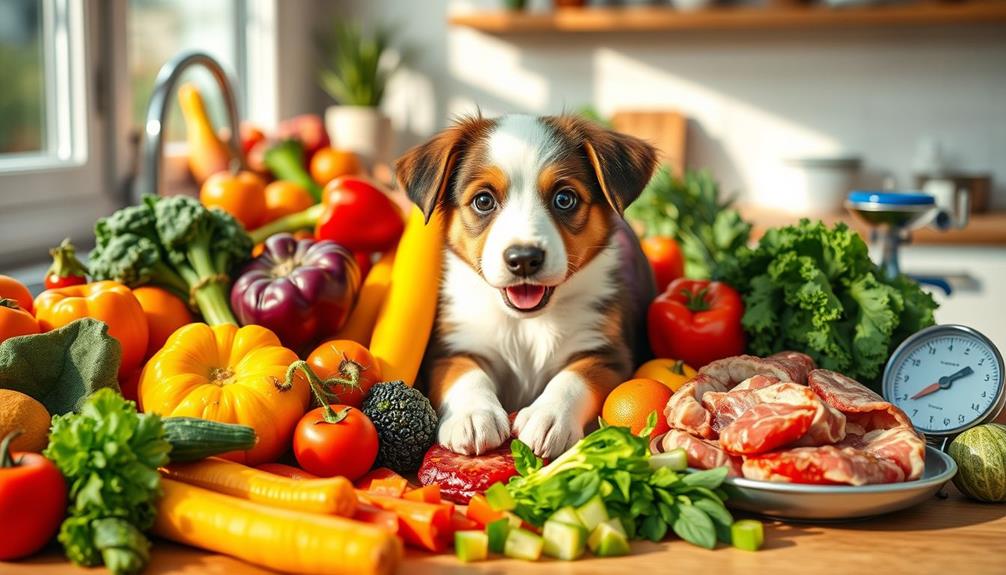
When it comes to your puppy's nutritional needs, growth and development are top priorities.
A balanced diet rich in natural ingredients is essential to support their energy levels and overall health.
You'll need to adjust their feeding frequency and quantities as they shift from milk to solid food.
Keeping a close eye on their growth will help you guarantee they're getting the right amount of nutrients for a healthy start.
Growth and Development Needs
Guaranteeing your puppy gets the right nutrition is essential for their growth and development during those significant early months. Puppies require a daily intake of 5-10% of their body weight in raw food, which typically decreases to around 5% by six months of age. This nutritional foundation is critical for providing the energy they need for healthy growth and development, especially during their first year.
Additionally, incorporating a variety of fruits and vegetables can enhance their diet, offering essential vitamins and minerals like antioxidants found in cranberry juice.
When you feed your puppy, it's important to balance their meals to make sure they receive all necessary nutrients. You might consider using a puppy food calculator to determine the right amount based on their current weight and age.
As your puppy grows, their meal frequency will change, starting with 3-4 meals a day for very young pups, eventually evolving to twice-daily feedings.
Incorporating supplements like fish oil and probiotics can also support your puppy's overall health and development. With the right raw food diet and careful attention to their nutritional needs, you'll help your puppy thrive and grow into a healthy adult dog.
Feeding Frequency Guidelines
Balancing your puppy's meal frequency is essential for their nutritional needs and overall development. For very young puppies, you should aim to feed them three to four meals per day. This frequent feeding helps them receive the necessary energy and nutrients for rapid growth.
As your puppy matures, you can shift to two meals per day, which typically suits older puppies well. It's also important to take into account your puppy's investment in health through proper nutrition and regular vet check-ups.
Monitor your puppy's growth closely to guarantee they're maintaining a proper weight. Puppies require about 5-10% of their body weight in raw food daily, gradually reducing to around 5% by six months of age. Adjust their food intake as needed to support healthy development.
Introducing a variety of raw food recipes is important, so start with one or two options and gradually increase the variety to provide balanced nutrition.
Think about adding helpful supplements like fish oil, kefir, and pre/probiotics to enhance their diet. These additions can improve your puppy's overall health and well-being.
Transitioning to Solid Food
Introducing your puppy to solid food is an important step in their development. Ideally, you should start this change when your puppy is around 6 weeks old. Begin with fine and bland formulations that can complement their mother's milk.
For puppies aged 3-6 weeks, using a weaning paste can help ease the shift from milk to solid food, making the process smoother. It's also important to take into account sleeping patterns during this time, as proper rest supports overall growth and development.
As your puppy grows, they'll require approximately 5-10% of their body weight in raw food daily. By 6 months of age, this amount typically decreases to around 5%. It's essential to monitor their growth closely during this period. Adjust their food quantity as needed to guarantee they're meeting their nutritional needs effectively.
Ideally, moving to standard puppy food formulas should happen by 4 months. This change is significant as it supports their increasing nutritional demands during this critical growth phase.
Transitioning to Raw Diet
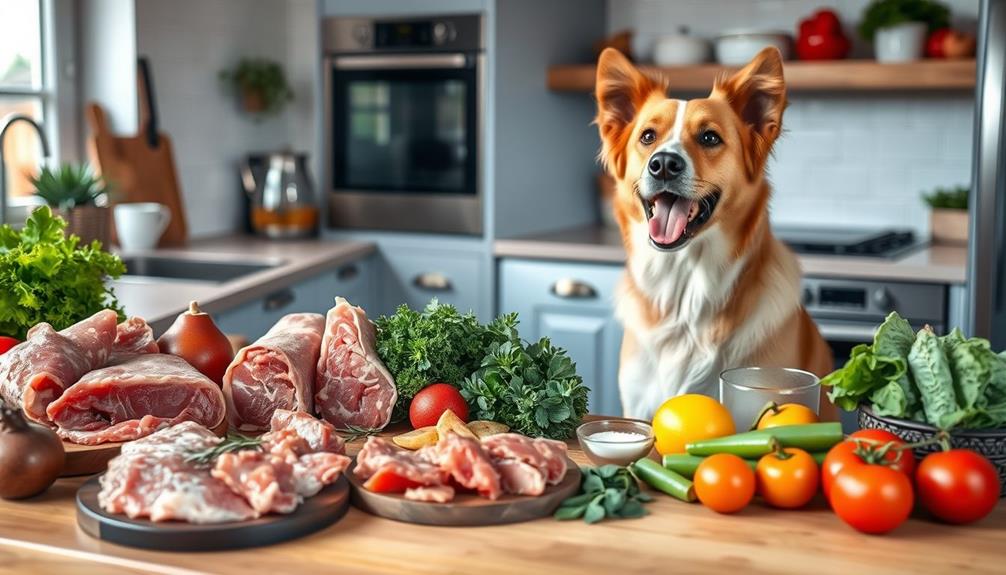
Shifting your dog to a raw diet can be a rewarding journey, but it requires careful planning and observation. During this change, it's crucial to collaborate with a veterinarian to guarantee your dog's health remains a priority. Start by gradually introducing raw food; begin with one or two recipes and slowly increase the variety to minimize potential digestive issues.
Monitor your dog's response closely. Watch for changes in appetite, energy levels, and stool consistency. Weight loss may occur in the first week, primarily due to water weight, but should not exceed 1-2% of body weight per week. A successful change may take several weeks, so patience is key.
Here's a quick reference table to help guide you through the process:
| Week | Action | Notes |
|---|---|---|
| 1 | Introduce 1-2 recipes | Monitor for digestive issues |
| 2 | Add variety | Observe energy levels |
| 3 | Adjust portions | Check weight regularly |
| 4 | Evaluate overall health | Consult your veterinarian |
| 5+ | Maintain & adjust as needed | Continue monitoring closely |
Benefits of Raw Feeding

Feeding your dog a raw diet can bring a host of benefits that enhance their overall well-being. One major advantage is improved digestion. A nutritious raw diet leads to better nutrient absorption, resulting in smaller, firmer stools that indicate efficient digestion. This means your dog is getting the most out of their food.
Additionally, raw feeding supports better weight control and strengthens your dog's immune system, contributing to their overall health and wellness. Studies have shown that certain dietary components, like glycolic acid for skin benefits, can also positively impact your dog's skin health. Even including a smaller percentage of raw food—about 25%—can yield significant benefits, such as fewer allergy symptoms and enhanced comfort.
You'll also notice improvements in dental health; raw diets promote cleaner teeth and healthier skin and coats, which can boost your dog's appearance and reduce dental issues.
For peak health, verify that the raw food for your dog is nutritionally balanced, comprising muscle meat, organ meat, and ground bone.
To maintain your dog's ideal body weight per day, remember that they require a higher percentage of high-quality protein when consuming raw food. Overall, the benefits of a raw diet can truly transform your dog's health and happiness.
Choosing Quality Raw Food
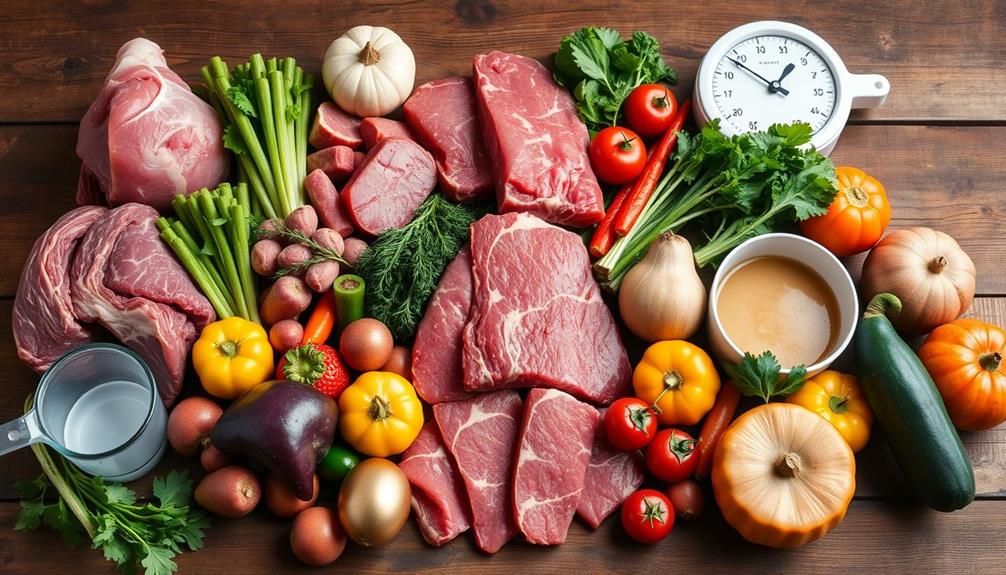
When it comes to reaping the benefits of a raw diet, choosing quality raw food is paramount. Not all raw food to feed your dog is created equal, so look for brands that offer complete and balanced meals for all life stages. This means incorporating muscle meat, organ meat, and finely ground bone without fillers or artificial additives.
Additionally, opting for raw food that's free from harmful additives can support your dog's overall health and well-being, much like how crucial oils for respiratory health can benefit humans.
The quality of ingredients greatly impacts the nutritional value of the food. Opt for reputable brands that prioritize transparency and strict quality control measures. We Feed Raw, for example, guarantees safety and consistency, helping to retain nutrient levels and palatability.
Preparation methods also matter. Brands that use careful processing techniques help maintain the food's nutritional integrity, making it easier for your dog to absorb those vital nutrients.
While the cost of raw dog food can vary based on ingredient quality and sourcing, it's important to balance both your budget and the nutritional value when selecting the right food.
Aim to find the ideal body weight per day for your dog, guaranteeing they receive the best nutrition possible to support their health and well-being.
Frequently Asked Questions
How Much Raw Food Should I Feed My Dog Chart?
To determine how much raw food you should feed your dog, use a feeding chart that considers your dog's weight, age, and activity level. Adjust portions regularly based on their weight and body condition to guarantee ideal health.
How Much to Raw Feed My Dog Calculator?
When it comes to feeding your dog raw, think of it as crafting a masterpiece. Use the raw food calculator to tailor your pup's meal plan, ensuring ideal health based on weight, activity, and needs.
What Is the 80 10 10 Rule for Raw Dog Food?
The 80 10 10 rule for raw dog food means you should feed your dog 80% muscle meat, 10% organ meat, and 10% raw bones. This balance guarantees ideal nutrition and health for your furry friend.
What Are the Percentages for BARF Diet?
You might think feeding your dog's just a scoop, but for the BARF diet, you'll want 2-3% for adults and 5-10% for puppies. Balance is key, so adjust as needed for individual needs.
Conclusion
In summary, feeding your dog a raw diet can be rewarding and beneficial when done correctly. For instance, imagine a dog named Max, who struggled with allergies and weight issues. After changing him to a raw diet, his coat became shinier, and he shed pounds while his energy levels soared. By understanding portion sizes and nutritional needs, you can guarantee your furry friend thrives on a raw food diet. Your dog deserves the best—embrace the alteration!
Rachael, the Editor in Chief of RachaelsRawFood.com, is an inspiring and passionate individual who has dedicated her life to promoting the benefits of a raw food lifestyle. Known for her vibrant and energetic personality, Rachael has built a strong online presence that has transformed her personal journey into a thriving community of raw food enthusiasts.
-

 Raw Food Recipes2 months ago
Raw Food Recipes2 months agoHow Much Raw Food Do You Feed Your Dog? A Calculator Guide
-

 Getting Started with Raw Food2 months ago
Getting Started with Raw Food2 months agoWhy Is Raw Food Bad for Cats? Essential Information
-

 Getting Started with Raw Food2 months ago
Getting Started with Raw Food2 months agoDoes Raw Food Make Dogs Constipated? Find Out Here
-
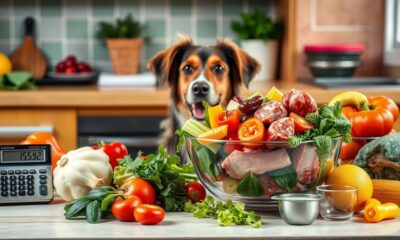
 Raw Food Recipes2 months ago
Raw Food Recipes2 months agoHow Much Raw Food to Feed a Dog: Use This Calculator
-

 Raw Food Recipes2 months ago
Raw Food Recipes2 months agoRaw Food Vs. Kibble: Which Is Better for Your Dog?
-
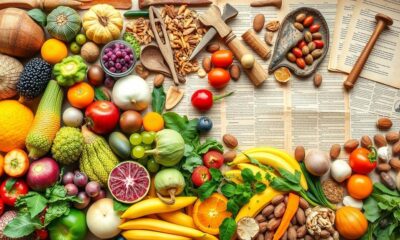
 Health and Wellness2 months ago
Health and Wellness2 months agoWhat Is the History of the Raw Food Diet? A Comprehensive Overview
-

 Raw Food Recipes2 months ago
Raw Food Recipes2 months agoCan My Dog Be Allergic to Raw Food? Understanding the Symptoms
-
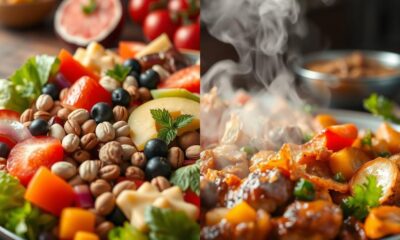
 Health and Wellness2 months ago
Health and Wellness2 months agoWhat Is the Difference Between Raw Food and Cooked Food?
